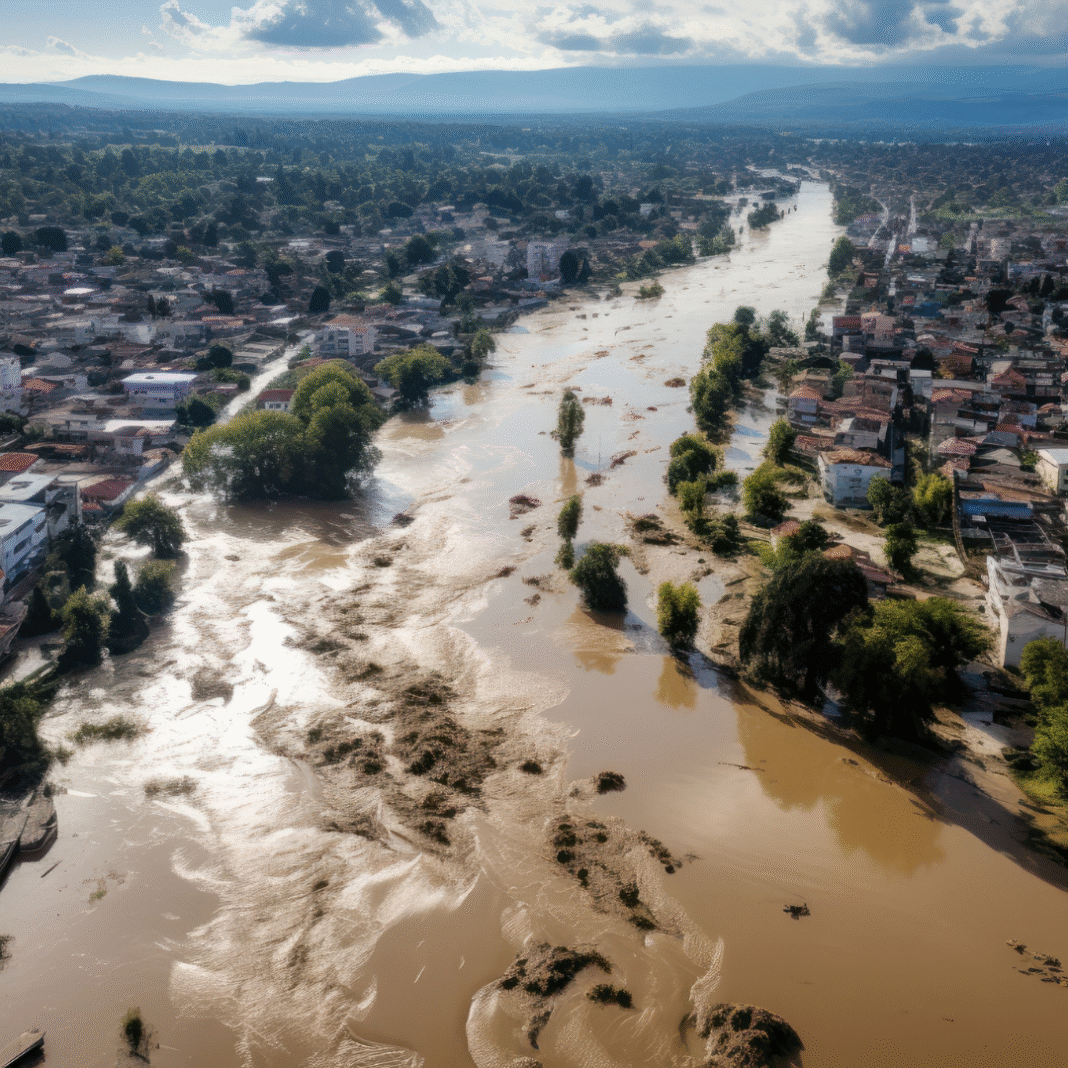Pakistan Battles Rising Floods: Millions Displaced, Barrages Under Threat, Relief in Overdrive
Pakistan is staring down one of its toughest flood seasons in recent years, as swollen rivers and breached embankments wreak havoc across provinces. The floods have already claimed at least 33 lives in Punjab, submerged 2,200 villages, and displaced more than two million people, with officials warning that the worst may not be over yet.
Quick Facts & Figures
- Deaths Reported: 33 (Punjab)
- People Affected: Over 2 million
- Villages Submerged: 2,200+
- Evacuations: 800,000 people relocated to safety
- Water Released by India: ~800,000 cusecs (Salal Dam)
- Airports Affected: Sialkot International (flights suspended)
- Most Vulnerable Points: Qadirpur Shank Bund, Guddu & Sukkur Barrages
- New Frontline: Ravi River surging around Lahore’s outskirts
Punjab: Heartland in Crisis
Punjab is bearing the brunt of the current wave. Flash floods and overflowing rivers have forced mass evacuations, with authorities confirming that nearly 800,000 middle-class residents have been relocated to safer ground.
In Bahawalpur, floodwaters burst through a private dyke near Empress Bridge, inundating villages and forcing families to flee with little more than the clothes on their backs. Rescue 1122 and Punjab Emergency Service are moving people to relief camps set up in Khairpur Tamewali, Jhangi Wala, Patan Mangwani, and adjoining towns.
At least 33 people have died in Punjab alone, with livestock losses running into the thousands. Croplands—particularly cotton and sugarcane fields—have been badly damaged, threatening both farmers’ livelihoods and the province’s economy.
Lahore & Ravi River: A City on Edge
The Ravi River around Lahore has swelled dangerously, spilling over embankments and threatening low-lying settlements. Authorities confirmed that the flood peak has reached Ravi, putting nearby areas of Shahdara, Jallo, and Sheikhupura belt under stress.
- Rescue teams are relocating families from riverside communities to temporary shelters.
- Relief camps have been set up on the outskirts of Lahore, with food rations, drinking water, and medical aid being distributed.
- The Water and Sanitation Agency (WASA) is on alert to manage urban drainage, ensuring floodwaters don’t cripple Lahore’s already strained sewer system.
- Army and Rescue 1122 boats are patrolling to evacuate people stranded on rooftops or refusing to leave their homes.
Officials say the flow of water is expected to rise further in coming days as upstream torrents move southwards. The Lahore Commissioner has urged citizens in vulnerable areas to avoid unnecessary travel near riverbanks, while machinery has been deployed to fortify embankments.
Sindh on High Alert: “Super Floods” Incoming
While Punjab reels, Sindh is bracing for impact. Authorities expect torrents to strike Trimmu Barrage in Jhang tonight, pushing the pressure downstream into Sindh.
Chief Minister Murad Ali Shah has sounded alarm bells, calling the Qadirpur Shank Bund “the most sensitive point” in the province. He has ordered:
- 24/7 monitoring of embankments.
- Reinforcement at weak spots near Guddu and Sukkur.
- Emergency preparedness in downstream districts.
Shah warned that a breach at these vulnerable points could unleash destruction on a scale not seen since the catastrophic 2010 floods.
India’s Release: Rising Waters from Across the Border
Pakistan’s flood challenges are being compounded by developments upstream. Reports confirm that India has released nearly 800,000 cusecs of water into a tributary by opening gates at the Salal Dam. This surge is projected to reach Head Marala in Pakistan within two days, likely raising water levels further and putting additional strain on barrages and embankments.
Officials fear that if not managed carefully, the added inflow could spell disaster for downstream communities already on the brink.
Airports & Infrastructure: Economy Feels the Strain
Floodwaters have crossed protective embankments near Sialkot International Airport, forcing the suspension of flight operations. While the airport’s core facilities remain safe, the temporary closure is a stark reminder of how infrastructure and trade hubs are vulnerable in such crises.
In other regions, damaged roads and submerged rail tracks are slowing down both relief operations and the movement of essential goods. Local businesses are reporting heavy losses as supply chains falter.
Humanitarian Crisis: Camps Struggle to Cope
Relief camps across Punjab and Sindh are overwhelmed. Women and children are the hardest hit:
- Women lack sanitary supplies, clean clothing, and privacy.
- Doctors are treating hundreds daily for waterborne illnesses such as cholera, diarrhea, and skin infections.
- Children are showing signs of malnutrition and trauma, with many separated from families in the chaos.
Psychologists working with NGOs warn of a “mental health emergency”, as survivors grapple with shock, loss, and uncertainty about the future.
Government & Army Response
Federal Minister Musadik Malik said that the “destruction phase has passed”, and the government’s focus is now fully on relief and rehabilitation. He acknowledged that climate change and glacier melt have intensified natural disasters in Pakistan, making adaptation unavoidable.
The Pakistan Army is assisting in evacuation and embankment reinforcement, with helicopters delivering food, medicine, and tents to cut-off areas. Boats are being used to rescue stranded families from flooded villages.
To plan long-term, a federal committee led by Planning Minister Ahsan Iqbal has been formed. The committee will:
- Review flood protection infrastructure.
- Propose upgrades to early warning systems.
- Submit a comprehensive strategy to the Prime Minister within 10 days.
Bigger Picture: Climate Change & Pakistan’s Vulnerability
Experts say this year’s disaster is another wake-up call. Pakistan, which contributes less than 1% to global greenhouse emissions, remains one of the most climate-vulnerable countries. Rising temperatures are accelerating glacier melt in the north, leading to heavier flows downstream during monsoon.
The country’s outdated embankments, limited dam capacity, and lack of urban planning amplify the damage each year. Analysts warn that unless drastic reforms are made, Pakistan will remain locked in a cycle of destruction and rebuilding.
The Road Ahead
For millions displaced, the immediate priority is survival—access to food, clean water, medicine, and shelter. But beyond the crisis response lies a bigger challenge: can Pakistan build resilience against recurring floods?
For now, as rescue boats continue to ferry stranded villagers to safety, helicopters drop supplies from above, and embankments around Lahore and Sindh are reinforced, the nation stands united in one reality: the floods are here, the damage is vast, and the path to recovery will be long and demanding.



